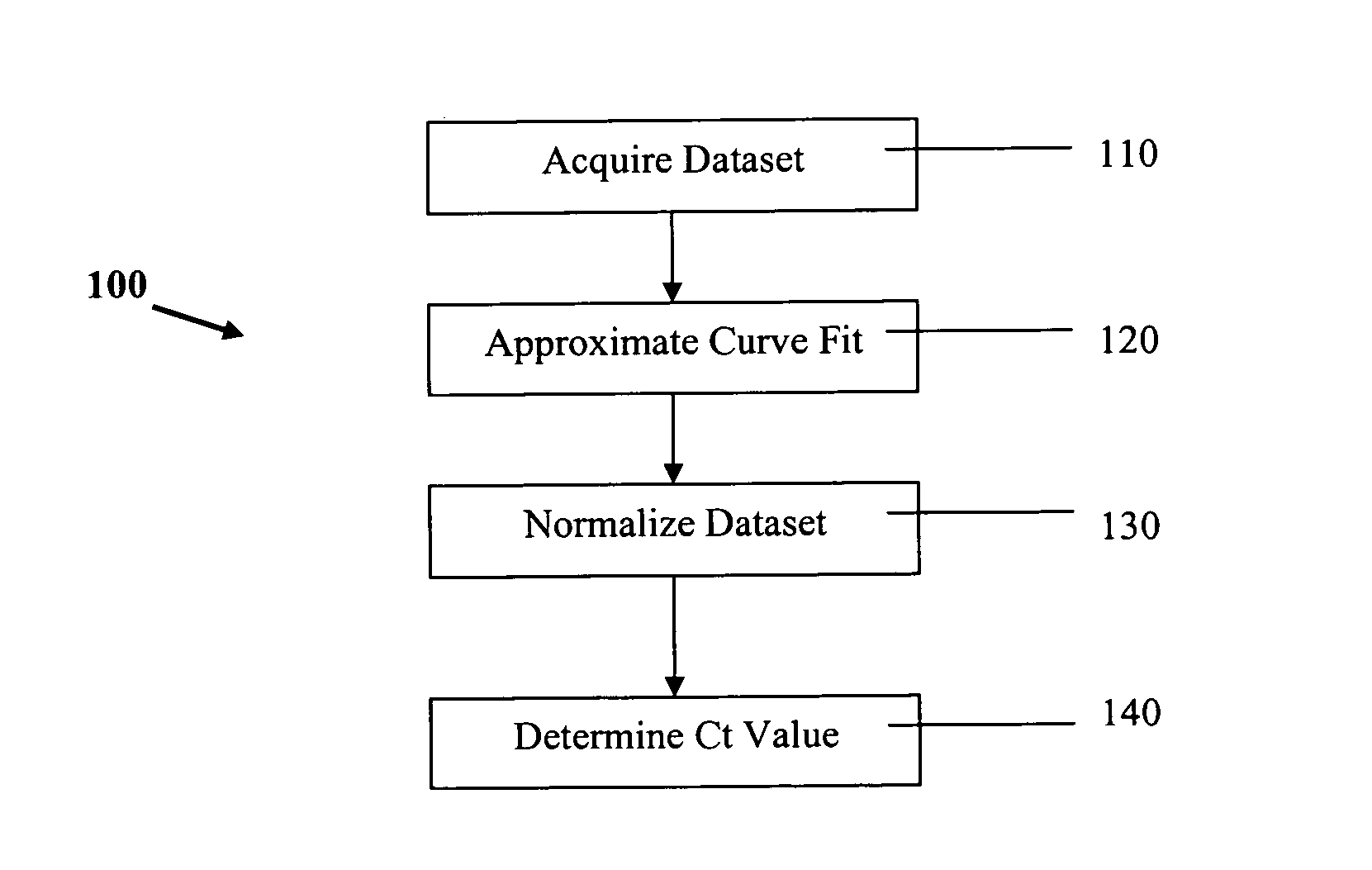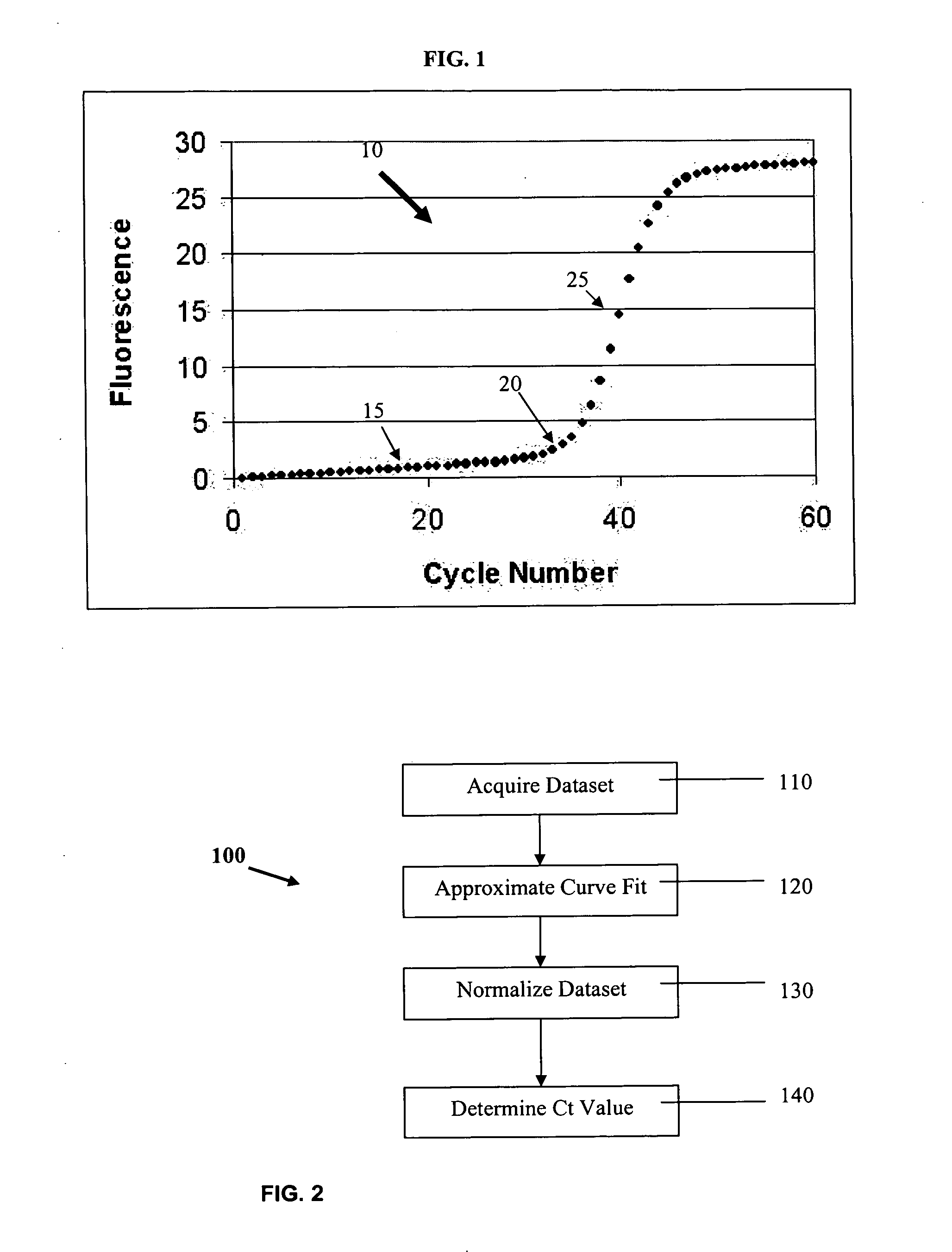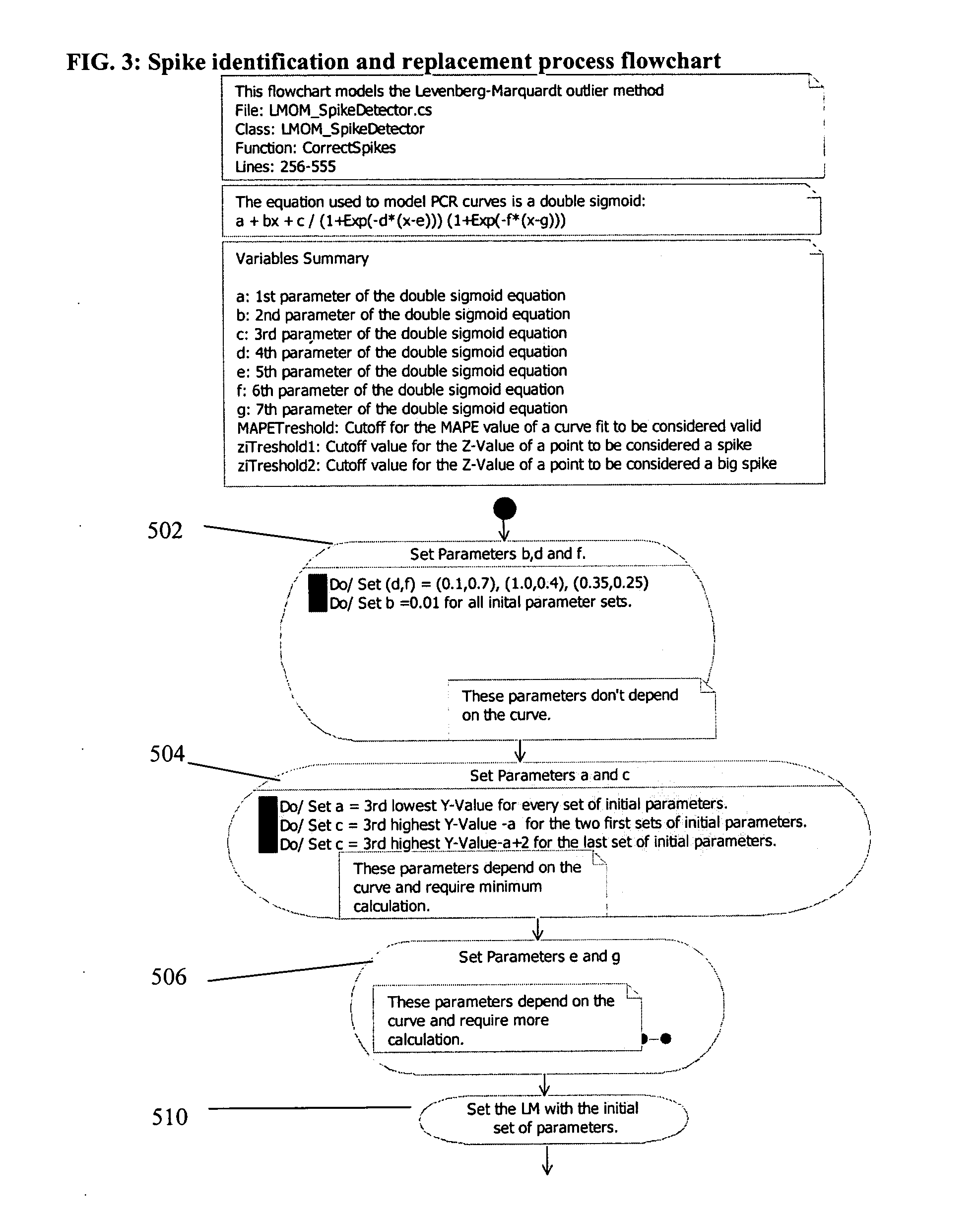PCR elbow determination by use of a double sigmoid function curve fit with the Levenberg-Marquardt algorithm and normalization
a growth curve and function curve technology, applied in the field of systems and methods for processing data representing sigmoid or growth curves, can solve the problems of inability to meet inability to accurately determine the baseline stop (or end of the baseline) of the growth curve shown in fig. 1 and other problems, to achieve the effect of satisfying the needs of large-scale data sets, and reducing the number of methods
- Summary
- Abstract
- Description
- Claims
- Application Information
AI Technical Summary
Benefits of technology
Problems solved by technology
Method used
Image
Examples
examples
[0097] Applying the double sigmoid / LM method to the data shown in FIG. 10 gives values of the seven parameters in equation (1) as shown in Table 1 below:
TABLE 1a8.74168b0.0391099c51.7682d0.250381e8.09951f0.548204g15.7799
These data were then normalized according to equation (7) (Baseline subtraction with division) to yield the graph shown in FIG. 11. The solid line shown in FIG. 1 is the double sigmoid / LM application of equation (1) to the data set, that has been normalized according to equation (7). The AFL value for this case is 1.5, so using equation (10) with AFL-1 equal to 0.5 and using a BFGS quasi-Newton method to find the root, gives a Ct value of 12.07.
[0098] Another example of this double sigmoid / LM method is shown in FIG. 12. The solid line in FIG. 12 is the double sigmoid / LM curve fit of the data with parameter values shown in Table 2.
TABLE 2Estimatea1.47037b0.00933534c10.9464d0.79316e35.9085f0.108165g49.193
After applying the normalization equation (7) to this data...
PUM
| Property | Measurement | Unit |
|---|---|---|
| Absorbance | aaaaa | aaaaa |
| Fluorescence | aaaaa | aaaaa |
| Level | aaaaa | aaaaa |
Abstract
Description
Claims
Application Information
 Login to View More
Login to View More - R&D
- Intellectual Property
- Life Sciences
- Materials
- Tech Scout
- Unparalleled Data Quality
- Higher Quality Content
- 60% Fewer Hallucinations
Browse by: Latest US Patents, China's latest patents, Technical Efficacy Thesaurus, Application Domain, Technology Topic, Popular Technical Reports.
© 2025 PatSnap. All rights reserved.Legal|Privacy policy|Modern Slavery Act Transparency Statement|Sitemap|About US| Contact US: help@patsnap.com



